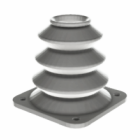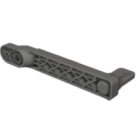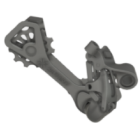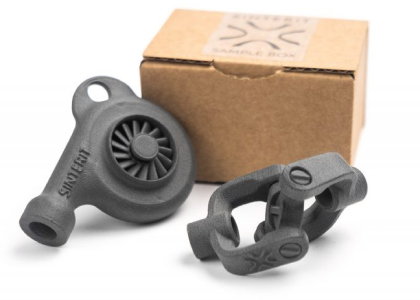3D printing meaning: what does “3D printed” really mean?
When someone says an object is 3D printed, they’re referring to more than just a technical process. The meaning of 3D printing goes beyond machines and materials — it reflects a shift in how we design, manufacture, and think about physical products.
What does “3D printed” mean?
To put it simply, a 3D printed object is one that’s been created using an additive manufacturing process — where material is deposited layer by layer based on a digital model. This digital-first method doesn’t rely on molds or subtractive techniques like CNC milling.
But the meaning of 3D printing is also philosophical:
- it emphasizes customization,
- enables decentralized production,
- supports rapid iteration, and
- allows for geometries that traditional manufacturing can’t produce.
Whether it’s a functional prototype, a medical model, or a finished part — if it’s made additively from a digital file, it’s 3D printed.
When is something considered 3D printed?
An object is considered 3D printed if it’s produced directly from a digital model using an additive process, with no molds or subtractive steps involved. This includes everything from small prototypes made at home to industrial parts created in aerospace or medical manufacturing.
It’s worth noting that not all digitally made objects are 3D printed. For example, CNC-milled parts also come from digital files but are made by cutting material away, which is subtractive. The defining feature of 3D printing is layered, additive creation driven by software.
If the object was built from layers, guided by a digital design, and without traditional molds or machining — it’s 3D printed.
When is something considered 3D printed?
The term “3D printing” was inspired by traditional 2D printing. In both processes:
- a digital file guides the printer,
- the output is a physical representation of data.
Instead of laying ink on paper, however, a 3D printer builds up material in three dimensions — whether by extruding filament, curing resin, or sintering powder.
While the term started informally (often associated with desktop FDM printers), it’s now the common name for all additive manufacturing technologies, including SLS, SLA, DMLS, and more.
It stuck because it’s simple, visual, and easy to understand, helping the technology reach beyond engineering and into mainstream use.
When is something considered 3D printed?
An object is considered 3D printed when it is produced using an additive, layer-by-layer process, directly based on a digital 3D model, and without the use of molds or subtractive manufacturing methods. This means material is added precisely where needed to form the final geometry, rather than being cut away from a larger block. The meaning of 3D printing in this context applies to a wide range of applications — from consumer-grade prototypes and customized medical devices to high-performance industrial parts used in sectors like aerospace. While CNC-milled components also rely on digital input, they are created by removing material, which makes them part of subtractive manufacturing — and thus outside the definition of what it means to be truly 3D printed.
Related: see real-world 3D printing examples here.
Explore also
- What is print 3D? Concept of 3D printing
- Example of 3D printing
- How does 3D printing work?
- Slicing in 3D printing
- What do you need for 3D printing?
- 3D printing benefits
- Is 3D printer dangerous? Understanding the real risks
- 3D printing issues
- 3D printing history
- 3D printing facts
- Who uses 3D printers? Not just for engineers anymore
- Where 3D printing is used
- 7 common 3D printing myths
- 3D printing global market
- Cultural impact of 3D printing
- Hybrid manufacturing (CNC + AM)
Related categories













